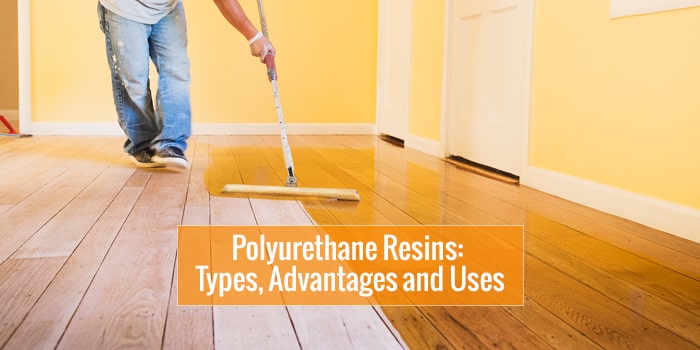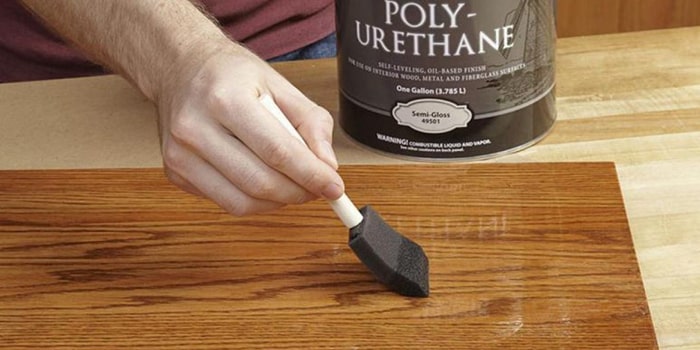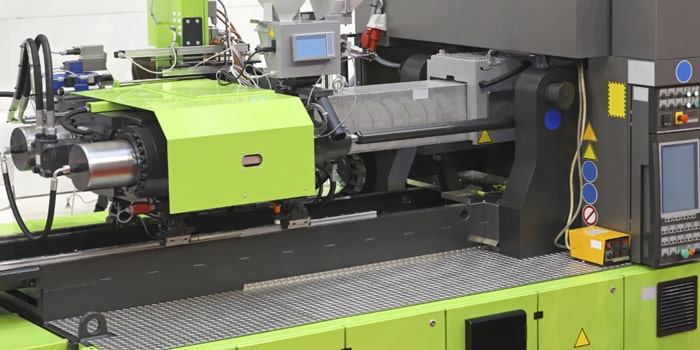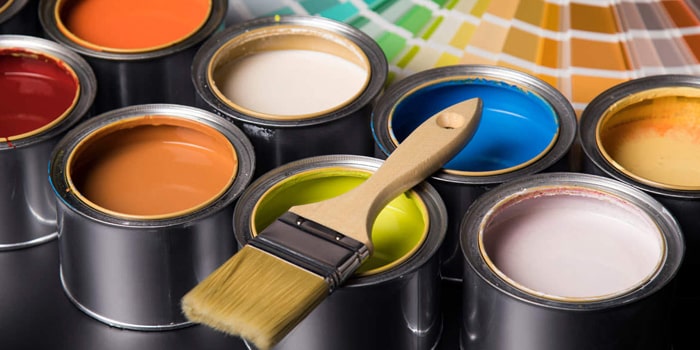Polyurethane Resin Uses, Types and Advantages

Polyurethane resins are copolymers that form when an alcohol called polyol (each of its molecules contains 3 or more reactive hydroxyl groups) reacts with an isocyanate – (dual or polymeric) when appropriate additives and catalysts are introduced. A wide range of diisocyanates and polyols can be made to react for polyurethane resin production, and therefore, polyurethane resin uses are many and wide, and cut across a vast range of industries.
Advantages of Polyurethane Resins
Thanks to their composition and nature, polyurethane resin uses can be found in a number of consumer as well as industrial products. They are:
- Highly elastic
- Balanced in hardness and
- Capable of adhering well to substrates
Types of Polyurethane Resins

1. Flexible Polyurethane Foam
This is used in a range of consumer and industrial products for cushioning purposes, like: interiors of vehicles, furniture, mattresses, packaging, and so on. It can be made into a number of shapes, and you can have it in the desired firmness. It is lightweight, sturdy, comfortable, and offers support. Get some uses of stearic acid.
2. Rigid Polyurethane Foam
This foam is used to provide more comfort in homes and commercial properties through insulation and minimizing energy loss. Heating and cooling (air conditioners, room heaters, etc.) are responsible for high electricity bills. Rigid polyurethane foam can be effectively used to insulate walls, windows, doors, and roofs, and achieve uniform temperature and reduce noise levels too.
3. Coatings, Adhesives, Sealants and Elastomers

Adding polyurethane to certain products help in increasing its shelf life and improving its appearance. Adhesives of polyurethane facilitate in robust bonding, and polyurethane sealants help to seal more securely. Elastomers from polyurethane are lightweight and resistant to several environmental factors, recover from stress quicker and more efficiently, and can be molded into several shapes.
4. Thermoplastic Polyurethane (TPU)
This is a very flexible, durable, and elastic material which can withstand heavy impact, adverse weather and abrasion. As such, it can be made and used in numerous ways, and its addition to products improves its durability. It is 100% thermoplastic, and hence can be melt-processed, as well as extruded, injected, blown and compressed. TPU is widely used in fabrication as you can vacuum-form or solution-coat it. As it offers innumerable combinations of physical properties, it is very flexible, and finds applications in diverse industries, from construction to footwear.
5. Reaction Injection Molding (RIM)

The process of polyurethane RIM enables production of parts that cannot be manufactured through conventional injection molding processes, and is used in telecom equipment, electrical housing panels, car bumpers, etc. This process enhances flexibility of design, and facilitates production of foamed cores, encapsulated inners, wall parts (thick or thin), etc. Polyurethane RIM components are sturdy, lightweight, are heat resistant, dimensionally stable, provide heat insulation, and are dynamic. Industries from furniture to automotive and construction to sports goods use RIM parts.
6. Binders
Several types of fibers and particles can be made to adhere to each other using polyurethane binders. Sand casting in foundries, rubber flowing, wooden panels etc. are some of the areas where these binders find use. Oriented Strand Board (wood panels) have the highest share of usage of these binders. The panels are used in shop panels, beams, joists, flooring, sheathing and so on. The PU binders are also used as adhesive to bind flexible PU foam pieces or scraps in rebond carpet underlays. You can check out the best polyurethane resin suppliers in India
7. Waterborne Polyurethane Dispersions (PUDs)
As the name suggests, PUDs use water as the chief solvent. This material is overwhelmingly used in commercial applications, especially in manufacturing.
Polyurethane Resin Uses
1. Apparel
Polyurethane threads are mixed with nylon to produce stretchable, lightweight fabrics – today, with advancement in technology we have PU coating, thermoplastic elastomers, and spandex. With PU techniques becoming more sophisticated, a wide variety of apparel from synthetic skin and leather is used to make clothes, especially for sports, as well as accessories.
2. Appliances
Polyurethane resin uses can be widely found in appliances, as most appliances that we use in homes today contain at least a few polyurethane components. In big appliances, you have rigid foam for thermal insulation in refrigerators, freezers etc. It helps appliance manufacturers meet energy ratings. Rigid PU foam comprises of a tight cell structure, and cell gases that work to prevent transfer of heat.
3. Automotive
Polyurethane is widely used in automobiles. The foam in the comfortable car seats, the car ceiling, body, doors, windows, bumpers, spoilers – everywhere you will find this material. Another huge advantage offered by PU in cars is that it reduces weight and significantly improves a car’s ‘mileage’ or its fuel economy, enhances comfort, absorbs sound, provides insulation and resists corrosion.
4. Construction
The homeowner of today is a discerning customer who wants lightweight materials that are sturdy and durable, easy to install, flexible, and are of high quality. PU enables the conservation of natural resources, and by reducing energy loss, helps protect the environment. It is extensively used in construction thanks to its properties of insulation, flexibility, durability, insulation and exemplary strength : weight ratio. Apart from being comfortable, they are also highly affordable, and are popular in-home construction globally. Polyurethane resin uses can be found in homes thus:
- Flexible PU foam padding to cushion the carpet
- Reflective plastic covering over PU foam on the roof to keep away sunlight and heat to keep the house cool and reduce dependence on air conditioning
- Foam-core panels make it possible to have numerous colors for walls and roofs
- Doors for the main entrance and garages are available in a range of styles and finishes thanks to foam in the core
- PU elements facilitate design flexibility, whether you are renovating your home or building anew.
5. Composite Wood

Polyurethane resin uses extend to wood also. Modern materials like composite wood, used to make cabinets and other furniture in homes, have been made possible because of polyurethanes. PU based binders help to firmly and permanently adhere natural materials with manmade materials like laminated veneer, straw or particle board, OSB, long-strand lumber, and so on.
6. Electronics
Non-foam PU components are widely used in electronic and electrical industries for sealing, compressing and insulating circuit boards, underwater cables, and small components that are fragile and sensitive to pressure. These materials are referred to as PU potting compounds and are manufactured to meet several electrical, thermal and physical property requirements. They are excellent for protecting electronics with their adhesive and dielectric characteristics, and are resistant to water, volatile temperature fluctuations and solvents.
7. Flooring
Polyurethanes are added to floors to make them sturdier, easily maintainable, and beautiful. Flexible PU foam is used to cushion carpets as we saw earlier, and it enables the carpet to be used longer. It is widely used in commercial and residential buildings to increase the carpet’s lifespan, absorb ambient sound, and offer additional comfort when walking on it. It is also used to coat floors, as a protection from solvents and scuffing, and makes them easy to maintain. PU finishes can be used to refurbish old floors or to coat new cement, parquet or wooden floors.
8. Furnishings

Flexible PU foam is a very popular material used extensively in homes for furniture as well as furnishings, bedding, and carpet padding. It is used as cushioning in upholstery, as well as for increasing the comfort, support, and durability of furniture.
9. Marine
PU components help to significantly improve the durability and sturdiness of boats. PU epoxy resins are used to seal the hull of a boat, to ensure protection from the elements, and prevent it from corroding. Elements can affect the hydrodynamics of the boat, weaken it, and increase drag; all these factors are negated by the Polyurethane resins. Flexible PU foam is also used on boats to provide comfortable seating and bedding, and render a homely feel. Rigid PU foam is installed to insulate boats from extreme temperatures as well as noise, and protects boats from wear and tear and abrasion. It also helps to increase the capacity of a boat to carry weight without making the boat itself too heavy. The maritime industry uses thermoplastic PU thanks to its elasticity, durability, and its malleability and ease of processing. It has a plethora of uses like coating for wires and cables, drive belts, engine tubing, seals, hydraulic hoses, and ship molding as well.
10. Medical
Polyurethane resins are widely used in several medical applications – mainly equipment and accessories including:
- Hospital bedding
- Wound dressings
- Tubing for a variety of equipment, especially catheters
- Surgical drapes
- Numerous injection molded devices
- Temporary implants
PU resins offer the advantage of affordability, durability, toughness and flexibility, and are hence effectively used in the medical field. Also read about cosmetic raw materials.
11. Packaging
Highly affordable, PPF or polyurethane packaging foam, allows to secure and protect goods that need to remain in position throughout the transit period. It is chiefly used for the safe transportation of fragile goods like electronics, medical equipment, industrial parts, glassware, and any other items that are likely to get damaged in transit. PPF is versatile and cost-effective, and can be used to resolve many challenges during packaging, as they can be molded to provide a tailormade fit for every container.
12. Paints

Polyurethane Resins are used as two component as well as single component coatings for various applications in paints and coatings. Primarily they are used for durable high gloss coatings like in cars, industrial applications, floorings, wood coatings as well as PU resins are used to modify alkyd resins, which are used in paints, enamels and varnishes. PU resins are used for manufacturing moldable thermosetting plastics. The most common application is for architectural and furniture coating, special purpose coating, product finishing, and refinishing primers for automobiles. Also read some of the paint raw materials.
Are you looking for reliable chemical suppliers in India who can supply high quality PU resins, soya fatty acids, alkyd resins, dimer acid and more? Contact Bansal Trading Company today with your requirement. They are one of the best alkyd resin suppliers in India and will get back to you with a quote as soon as we can.
BTC_WEB_ADMIN







There is certainly a lot to find out about this subject. I love all of the points you ave made.
http://supremesearch.net